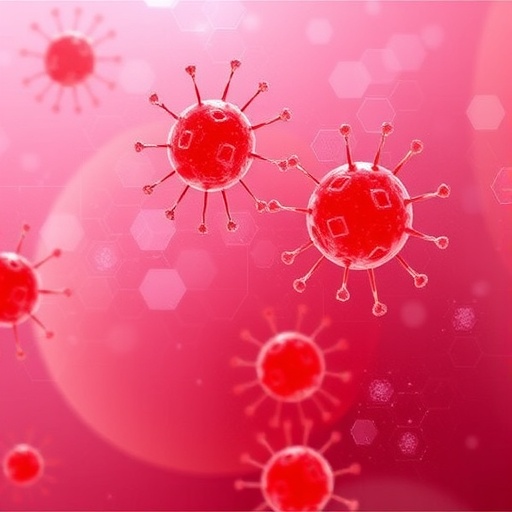University of Houston researcher receives $2.2 million grant from National Institutes of Health

Credit: University of Houston
In the early stages of obesity, endothelial cells – located in the inner layer of the arteries – become dysfunctional and lose their normal protective abilities. This dysfunction is a major contributor to heart disease and death. Xiang Li, research assistant professor of pharmacology at the University of Houston College of Pharmacy has found that the endothelial cells begin degrading and are instigated by sphingomyelinase, an enzyme needed to break down lipids, or fatty substances called sphingomyelin.
“The loss of endothelial cell function may stimulate the transformation of smooth muscle cells to hyperplastic phenotypes with increased proliferating and migratory potential, enhanced interactions with immune cells, and elevated production of extracellular matrix proteins,” said Li. That turn of events is associated with the enlargement of the arterial wall leading to atherosclerosis or hardening of the arteries.
Li has been awarded $2.2 million from the National Institutes of Health to observe how sphingomyelinase can change the lipid metabolism in the endothelial cells and cause them to become more susceptible to injury by obesity-related damaging factors.
“We successfully developed tissue-specific transgenic models that we can delete or overexpress the epigenetic enzyme gene only in the endothelial cells,” said Li, who said she is excited to observe the change in lipid metabolism caused by sphingomyelinase.
Obesity, generally defined as an excess of body-fat mass, is a global epidemic. In 2015-2016, the Centers for Disease Control and Prevention reported the percentage of American adults aged 20 and over with obesity at 39.8%. Obesity can have serious consequences of increased morbidity and mortality and may lead to many cardiovascular diseases like arterial stiffness, atherosclerosis and hypertension.
“The findings will help us better understand the cause of vascular injury and artery hardening that start within cells at the very early stage of patients with obesity. We hope that these mechanistic studies will give us an opportunity to identify new molecular targets that may help develop therapeutic strategies for treatment or prevention of obesity-induced cardiovascular diseases,” said Li.
###
Li’s co-investigators are Tahir Hussain, Joseph P. and Shirley Shipman Buckley Endowed Professor of Drug Discovery and Li Chen, assistant professor of biology and biochemistry.
Media Contact
Laurie Fickman
[email protected]
Original Source
https:/




